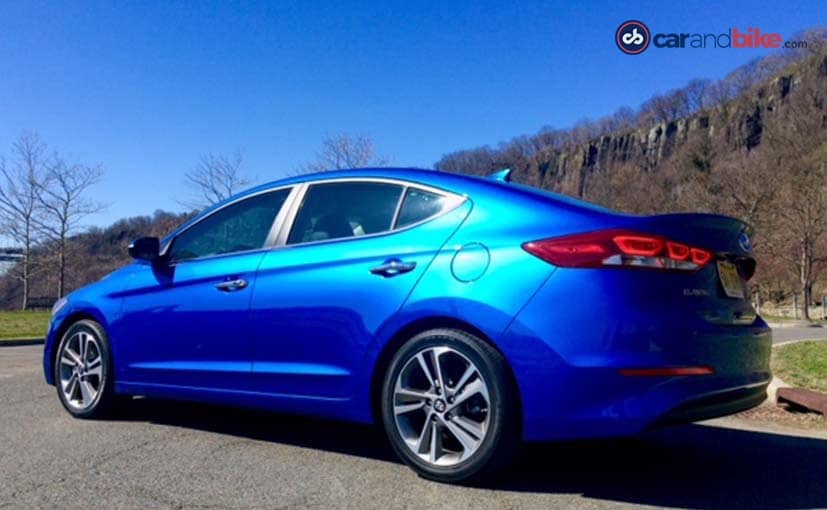
The Hyundai Elantra first came to us in its 3rd generation in 2004. That car was appreciated for its space and drive ability but was panned for terrible looks. We skipped the improved yet blah looking 4th gen, and in 2012 Hyundai finally returned the nameplate to the Indian market with the gorgeously fluidic 5th gen. The car was ample, stunning to look at, and drove reasonably well. For a while it dominated its segment, but the segment itself has been a bit of a non-starter off late – with an ageing Cruze and pricey Octavia for company. Though it has to be said the latest Toyota Corolla has sparked some interest. Given that, Hyundai feels it’s the right time to introduce the 6th generation Elantra to India which is why the company decided to launch it this year.
Watch the 2016 Elantra Review after the jump:
[youtube https://www.youtube.com/watch?v=dKCuhps1wl4]
I’ve had the chance to drive the 2016 Elantra in the United States, and here is our exclusive review then! The car loses the fluidic looks, and I have to say it is nowhere near as pretty as the last one. But while the new Elantra is similar-sized, it tends to appear bigger than the last car. This is primarily due to the lack of curves, and the hexagonal front grille. The car’s styling is upmarket, contemporary, yet lacks the weak-in-the-knees looks of the previous Elantra.
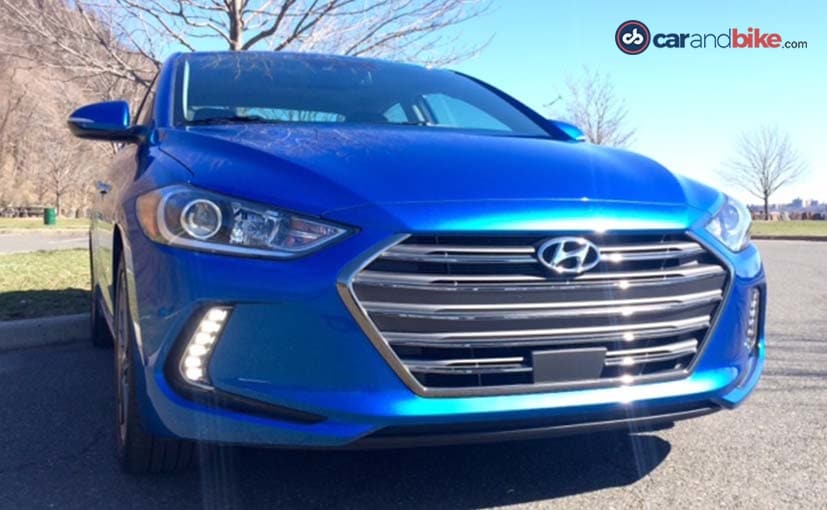
2016 Hyundai Elantra Front Grille
The straighter lines and pentagonal head and taillights are very attractive though, and are the redeeming features in this design for me. The taillight in particular receives the LED treatment, and looks very nice, with its three-pentagon motif. The LED headlight is also sexy and adds character, and while they have a nice whitened glass border, the daytime running lights have moved into the bumper. Its nice but viewed up front, it diminishes the nice width the car’s styling otherwise implies. The DRLs are also a bit Lexus-like.

2016 Hyundai Elantra Side
The last Elantra has been Hyundai’s best selling sedan worldwide in 2015, and the new one will certainly want to generate something similar. Overall though the midsize sedan segment is starting to shrink globally (but not at the fast rate it shrank in India), so that may be tough. But the new Elantra certainly seems to have the credentials. For all its success, the last car had a weak structure and tended to display that on Indian roads often. The suspension was also weak and that didn’t help its less-than-accurate steering. The new Elantra changes all that, and I will explain why further in this review.
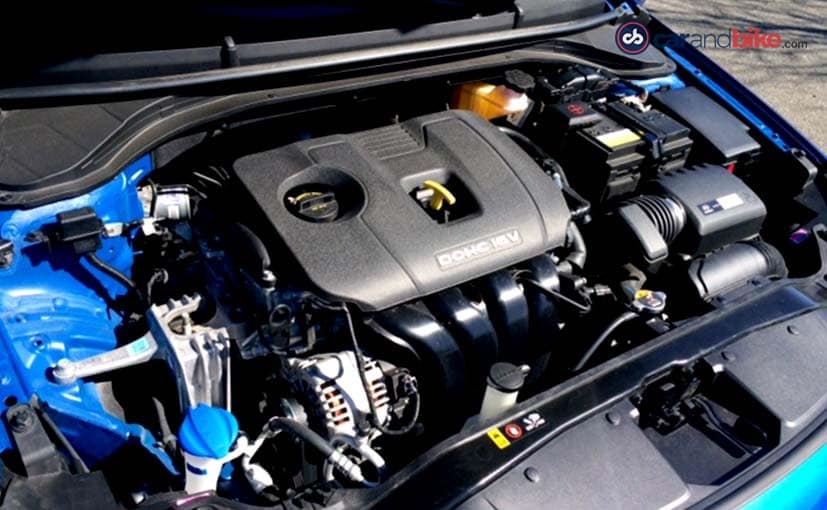
2016 Hyundai Elantra Engine
The car with me is the US spec 2.0-litre petrol with 147bhp on tap. It also delivers 179Nm of torque and the engine offers a broad torque band, which is great. The standard gearbox is a 6-speed manual though my test car has the optional 6-speed automatic with Shiftronic (tiptronic). There are three driving modes – eco, sport, normal, which as you must’ve guessed alter gearshift timing, throttle response, and steering feel.
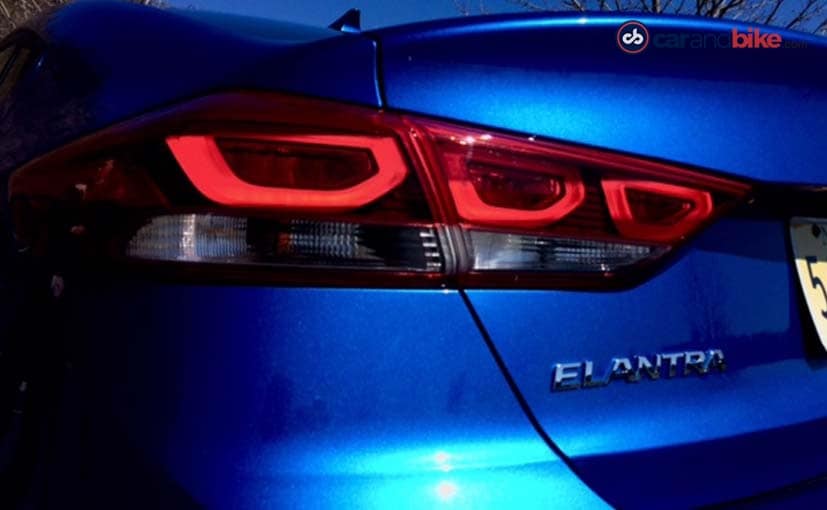
2016 Hyundai Elantra Tail Lamps
While I did get the sense of the wheel feeling lighter or stiffer, the sport mode is not very different or fun really. Ride quality is enhanced though – Hyundai has reconfigured the rear twist-beam, and added a ore vertical and longer shock absorber at the rear for better impact damping. This means a stiffer ride, without being hard and bouncy.The new Elantra has no paddle shifters, which means you have to nudge the tiptronic gearbox if you want to switch to manual. The car is best left in the computer-controlled automatic mode though which is brilliant. I strongly recommend that Hyundai pushes this new gearbox in India. There is definite reduction in overall noise levels on this car – and Hyundai tells me that NVH has been really a focus area for this generation. India gets the 2.0-litre petrol and the new reworked 1.6-litre diesel.
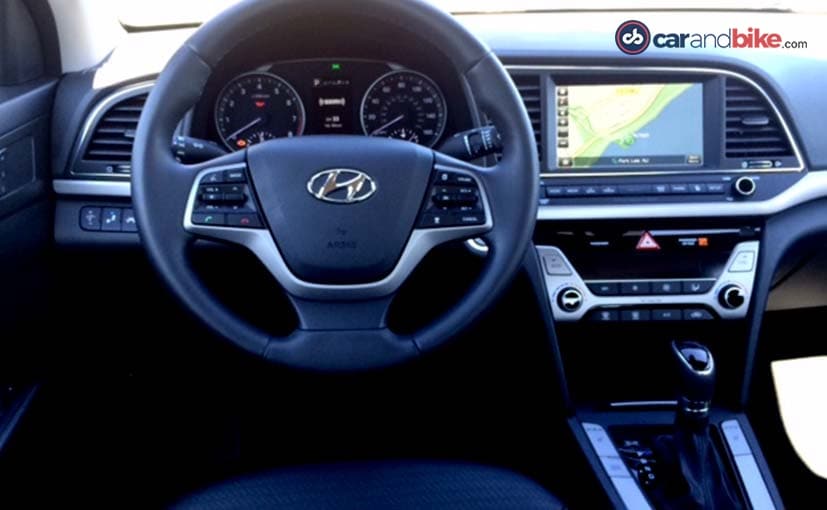
2016 Hyundai Elantra Cabin
On to the interior now. It’s a plush and well-finished cabin with good plastics and comfortable seats. The top spec with me gets a 7″ touchscreen with navigation and all the connectivity and entertainment you can think of. The car with me has satellite radio and Apple CarPlay / Android Auto and we see these features in the model launched in India as well.This car also has swivelling HID headlights, emergency braking with pedestrian detection, adaptive cruise control, and lane-keeping assist which have not made their way into the India-spec model.
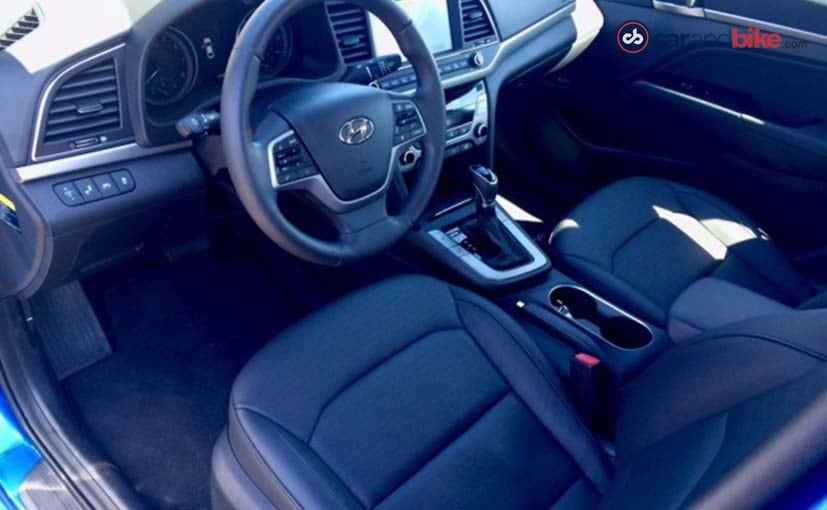
2016 Hyundai Elantra Cabin
And now the big catch. The US spec Elantra uses a new construction method that uses more glued-together panels rather than spot-welding, than the previous generation car. The idea is to offer greater stiffness, by using aerospace adhesives – not uncommon to cars these days anyway. But while the last car used 10 feet of glue bead the new one has 394 feet! And glue bead is applied robotically – but Hyundai’s India plant will not be able to offer the same level of sophistication in the car’s construction (since it will no doubt be made in India). A higher weld percentage may mean a compromised ride and build quality as compared to the global product.The new Elantra certainly has enough on board to excite me, and I can tell you straight away it will be one of the more important cars to launch this year. Yes the sexier Tucson and some high-decibel launches from other carmakers may drown it out a bit But make no mistake – it’s the best Elantra ever, and will be a compelling sedan on the market. Its spacious, has some clever features and with prices starting from 12.99 lakh for the petrol and 14.79 lakh for the diesel (all prices ex-showroom Delhi), Hyundai has made it quite the value-for-money offering.
[“source-ndtv”]





